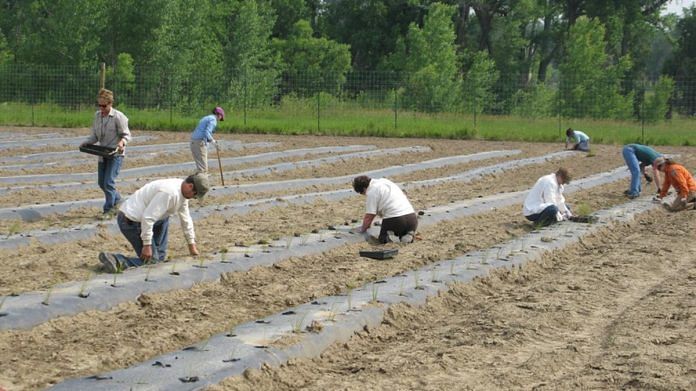Access to credit poses a significant challenge for farmers worldwide, particularly for small and marginal farmers. This issue is even more severe in developing countries, where approximately 80% of smallholder farmers lack access to credit, as reported by the Food and Agriculture Organization.
The implications of this credit gap are far-reaching, leading to lower productivity, limited adoption of new technologies, and reduced income for farmers.
The global agricultural sector has witnessed the rapid growth of digital technologies, presenting an opportunity to address this credit challenge in recent years. However, in India, farmers continue to face significant obstacles in accessing credit, particularly in remote and rural areas.
While the government has taken steps to tackle this issue by adopting liberal policies focusing on the acceleration of the finances for farmer producer organizations (FPOs), ensuring liquidity for the financial institutes and implementing the Kisan Credit Card scheme, among other measures, there remains a substantial credit gap that needs to be bridged. Innovative digital solutions are required to overcome the information gap that exists between banks and farmers.
Credit scores not readily available to farmers
Agriculture holds immense importance in India, employing about 43% of the country’s total workforce. However, the current credit score-based system is not readily available for the distribution of agricultural loans.
The 2019 Report of the Internal Working Group to Review Agricultural Credit highlighted the need for innovative digital solutions to bring excluded households into the realm of institutional credit in a structured and suitable manner.
The lack of access to credit and credit scores can be attributed to the absence of formal financial records pertaining to farm expenditures, income and surplus. Additionally, the lack of credit history information and the unavailability of credit reference bureaus in rural areas hinder the collection and storage of borrower information.
Despite these challenges, banks have implemented robust loan processing systems for agricultural financing.
However, the extensive processes followed by banks and other financial institutions, which include physical verification of farms and land ownership claims, pose significant challenges. Verifying these aspects requires substantial time and financial resources. Consequently, many farmer loans remain unprocessed due to the unavailability of authentic land records and credit history information.
Furthermore, even when farmers do secure loans, instances may arise where farm activities do not progress as planned. Some farmers apply for loans intended for specific crops with high credit limits but end up sowing different crops. In certain cases, borrowers divert loan funds for family emergencies, or external events adversely impact the project.
In light of these challenges, it is evident that there is a pressing need for innovative digital solutions to facilitate access to credit for farmers in India. Such solutions would not only bridge the credit gap but also address the complexities associated with verification processes and ensure the proper utilization of loan funds. By leveraging technology and data, the agricultural sector can unlock the full potential of farmers and contribute to their overall economic growth and development.
Digital lending solutions for agriculture
To streamline the process of agricultural loan disbursement, reduce field visits and prevent loan switching, agritech company Skymet Weather proposes digital agri-lending solutions for the sanction of new Kisan Credit Cards or the renewal of KCCs/other loans through a farm credit score.
This innovative digital solution aims to provide reliable data for hassle-free loan disbursement, detecting fraud, identifying false land ownership and crops cultivated, and preventing the diversion of funds by farmers. By minimizing manual intervention during the loan processing stage, this solution will enhance efficiency and reduce delays.
The generated report will include information on the farmer’s three-year cropping history and the expected yield from their farms. It will also display neighbouring plots with their survey numbers, enabling surveyors to identify false claims of land ownership.
Geospatial data to transform agri-lending
The Department of Farmer Welfare and Agriculture Development, Government of Madhya Pradesh, as part of the Food Innovation Hub India project, is collaborating with Skymet Weather to provide API-based access to digital land records.
Food Innovation Hubs are a multistakeholder and market-based partnership platform that aim to strengthen local innovation ecosystems to sustainably accelerate innovations, with the goal being the transformation of food systems. The Hub-facilitated partnership leverages advanced technologies to enhance agricultural practices and support farmers.
As a part of one of the public-private partnership projects facilitated by the Hub, a farm score will be generated by integrating various data sources, including survey numbers of lands, and the farmers’ three years of previous crop history.
Geo-fenced pictures of farmers’ fields will also be overlaid on cadastral maps – which show land boundaries – to enable comprehensive analysis and decision-making. Using these digital tools, the government aims to improve agricultural productivity and empower farmers in Madhya Pradesh.
Agri-lending benefits for farmers and banks
Based on the farm credit score obtained, lenders can approach these farmers for various types of agriculture loans, such as purchasing farm equipment and livestock (cows, goats, etc.), creating irrigation infrastructure, building wells and warehouses, and more.
Furthermore, the same platform used for underwriting loans can be utilized for monitoring the credit health and aiding in recovery. Remote sensing datasets, for example, are employed to monitor the fields after loan issuance, providing information on crop types.
Meanwhile, comprehensive field pictures and ground control points are collected using mobile applications developed in-house, along with open-source satellite-based optical and microwave datasets. This data enables the implementation of machine learning-based and conventional supervised crop classification methods.
By leveraging these digital agri-lending solutions, farmers can benefit from efficient loan processing, increased access to credit and improved monitoring of their farming activities.
This integrated approach holds the potential to transform the agricultural lending landscape for farmers and contribute to the growth and development of the agricultural sector in India.
This article was originally published in the World Economic Forum.
Also read: Global rice prices set to rally further as weather, India’s farm perks threaten supply






